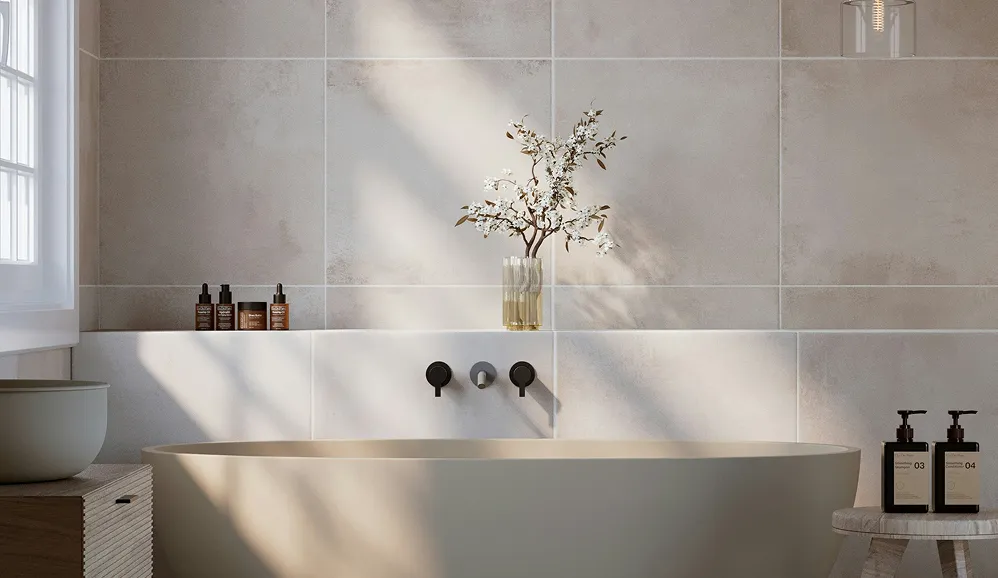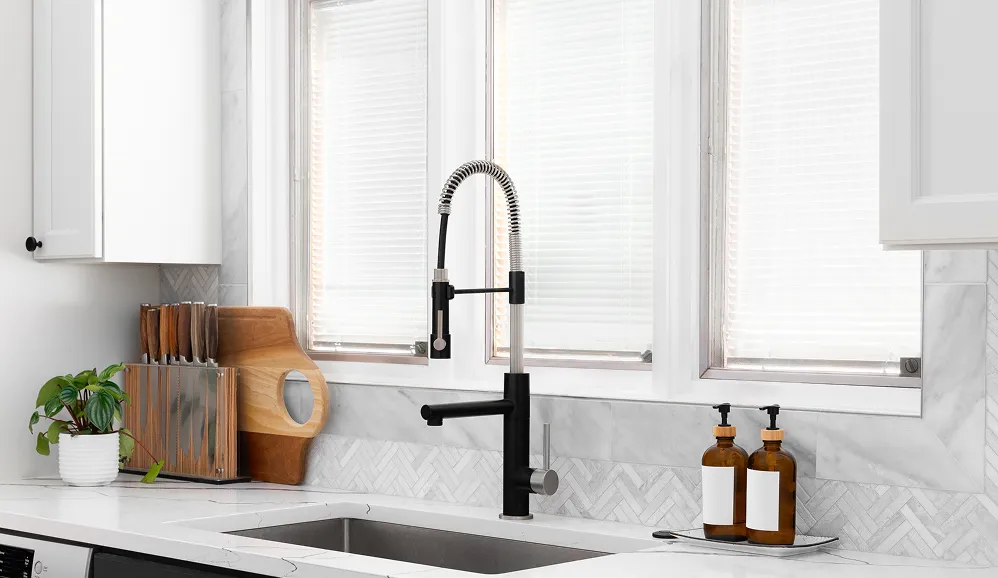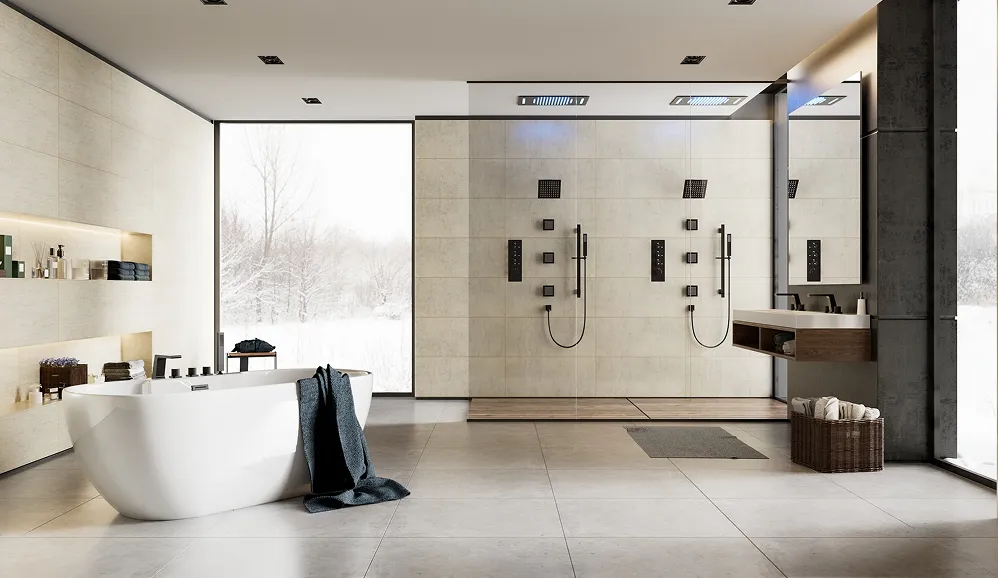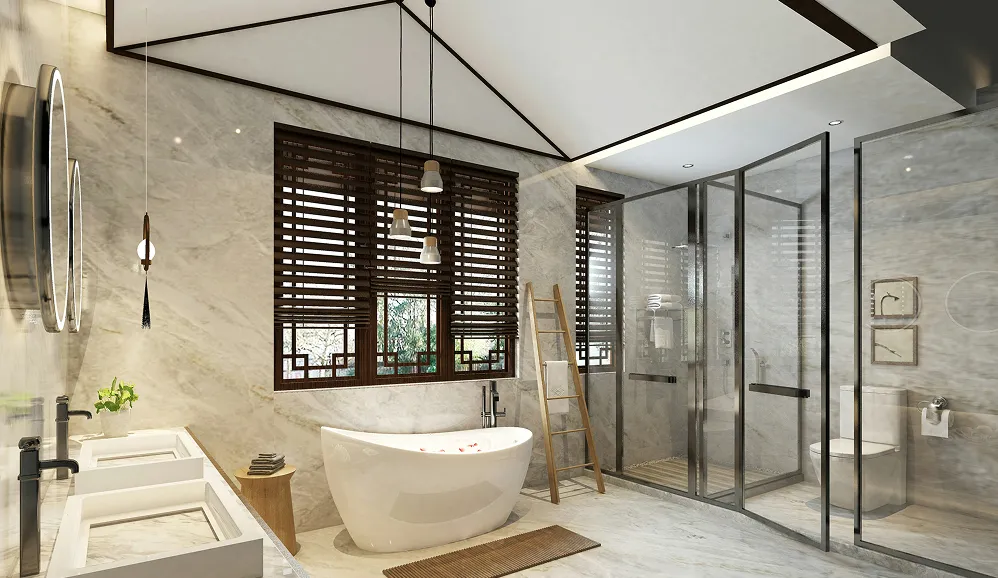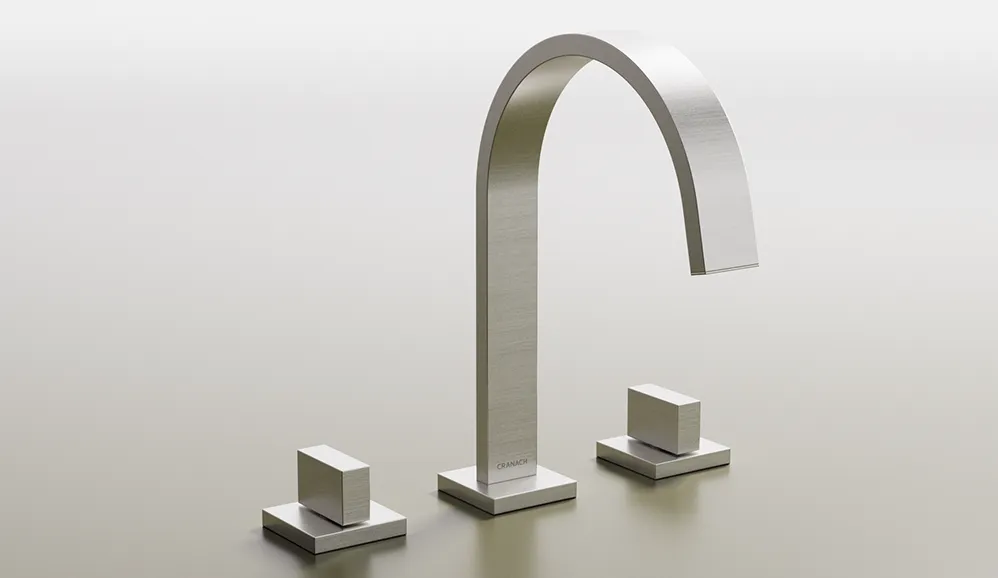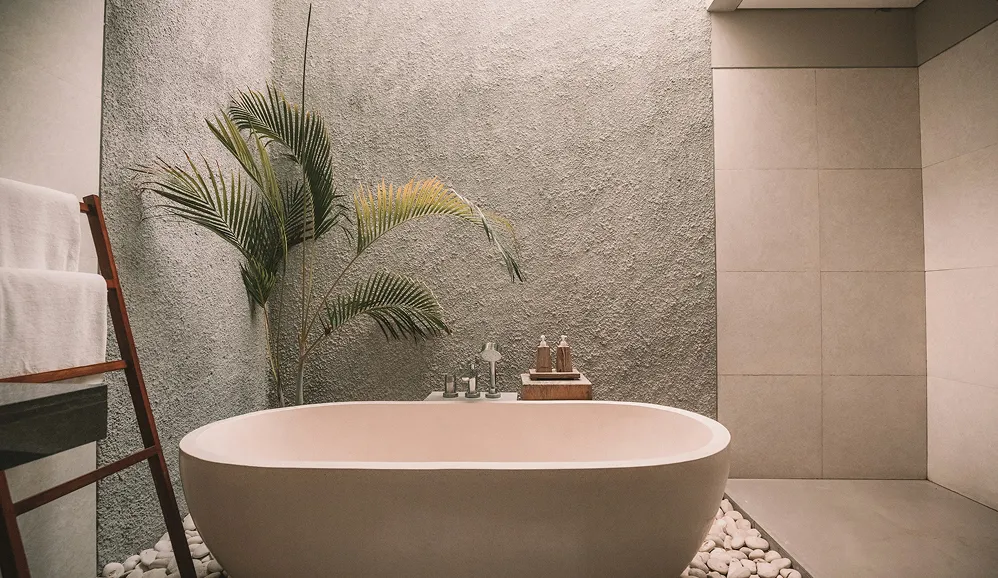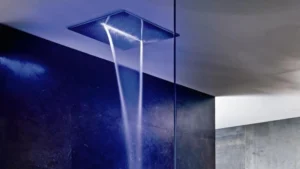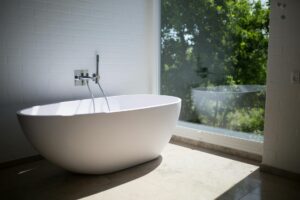Navigating Faucet Types: Finding Your Perfect Match
Choosing the right bathroom faucet can be a daunting task. With the vast array of styles and configurations available, it’s easy to feel overwhelmed. The global faucet market is experiencing significant growth, projected to reach USD 36.69 billion by 2030. This expansion reflects the increasing demand for modern and innovative bathroom designs. Understanding the different faucet types is the first step towards finding the perfect fit for your bathroom.

Understanding the Core Faucet Configurations
Several primary faucet types dominate the market, each offering unique benefits and drawbacks. Let’s explore the most popular configurations:
- Centerset Faucets: These faucets are a common choice thanks to their simple installation process. The hot and cold handles and spout are integrated onto a single base, typically with a 4-inch spread. This makes them a practical solution for smaller bathrooms.
- Widespread Faucets: For a more customizable and often upscale appearance, consider widespread faucets. These faucets feature separate handles and spout, typically mounted 8 to 16 inches apart. This design provides greater flexibility in placement and style.
- Single-Handle Faucets: Known for their sleek design and user-friendliness, single-handle faucets control both water temperature and flow with one lever. They are a convenient option for busy bathrooms.
- Wall-Mounted Faucets: To maximize counter space and create a modern look, consider wall-mounted faucets. These faucets are installed directly onto the wall above the sink, resulting in a clean, minimalist aesthetic.
Matching Faucet Type to Bathroom Style
The right faucet can significantly enhance your bathroom’s design. A sleek, wall-mounted faucet perfectly complements a modern, minimalist aesthetic. Conversely, a classic widespread faucet with decorative handles might be more suitable for a traditional bathroom. How to master product categories Therefore, it’s essential to consider your current décor when selecting a faucet.
Practical Considerations for Faucet Selection
Beyond aesthetics, several practical factors influence faucet selection:
- Sink Size and Configuration: Ensure the faucet’s spout reach and height are appropriate for your sink. A high-arc spout pairs well with a vessel sink, while a lower arc is better for a standard undermount sink.
- Water Pressure: Certain faucet types require adequate water pressure for optimal performance. It’s crucial to check your home’s water pressure before making a purchase.
- Installation Requirements: While some faucets are DIY-friendly, others may require professional installation. Factor in your skills and budget when choosing a faucet.
By carefully considering these elements – from style and configuration to practical aspects like sink size and water pressure – you can select a bathroom faucet that perfectly suits your needs and elevates your bathroom’s design.
Finishes That Last: Beyond Just Looking Pretty
A bathroom faucet’s finish does more than just add a touch of style; it significantly impacts its durability and how well it withstands daily wear and tear. Choosing a finish that can handle the demands of a busy bathroom is crucial for long-term satisfaction. Some finishes are better at resisting fingerprints and water spots, making your cleaning routine easier.
This section explores the practical aspects of various faucet finishes, empowering you to make the best choice for your needs. The increasing importance of home aesthetics is driving significant growth in the faucets market, expected to hit USD 26.6 billion by 2032. This emphasizes the need to pick a finish that both looks great and can handle the test of time. Explore this topic further
Decoding Durability: From Chrome to Matte Black
Different finishes offer varying degrees of resilience. Chrome, a classic choice, is well-known for its durability and tarnish resistance. However, it does tend to show water spots and fingerprints. Brushed nickel, a popular alternative, provides a softer aesthetic and hides imperfections more effectively. Trendy finishes like matte black require more attention and cleaning to maintain their sleek appearance. How to master finishes Choosing the right finish is a balancing act between style and practicality.
Maintenance Matters: Effort vs. Elegance
When selecting a bathroom faucet, consider the amount of effort you’re willing to put into keeping it clean. Chrome, while needing regular cleaning, typically doesn’t require specialized cleaning products. Finishes like matte black, however, often need specific cleaners to prevent damage and preserve their distinct look. This difference in maintenance can greatly impact your long-term satisfaction. Finding a balance between the look you want and the realities of cleaning is essential.
Beyond the Surface: Material Considerations
The material beneath the finish also plays a critical role in its durability. Solid brass faucets offer a sturdy base for any finish, contributing to its longevity. Less expensive materials might be more susceptible to corrosion or wear, affecting the finish’s appearance over time. For instance, a chrome finish on a lower-quality material might chip or peel more easily than one applied to solid brass. Consider both the finish and the base material when making your decision.
Hard Water and Finishes: A Critical Factor
Hard water can be tough on certain finishes, leading to mineral buildup. This can create unattractive deposits and impact the faucet’s functionality. Brushed nickel, while resistant to fingerprints, can sometimes trap mineral deposits. Understanding how finishes react to hard water is vital. Knowing your water quality is key to selecting a faucet that maintains its look and performance.
To help you choose the best finish for your needs, we’ve put together a comparison table highlighting the key features and considerations of popular bathroom faucet finishes:
Bathroom Faucet Finish Comparison: This table compares the most popular bathroom faucet finishes across key factors including durability, maintenance requirements, and typical price range.
| Finish Type | Durability Rating | Maintenance Level | Resistance to Water Spots | Average Price Range | Best For |
|---|---|---|---|---|---|
| Chrome | High | Low | Low | $50 – $200 | High-traffic bathrooms, budget-conscious shoppers |
| Brushed Nickel | Medium-High | Low-Medium | Medium | $75 – $250 | Modern bathrooms, hiding fingerprints |
| Matte Black | Medium | Medium-High | Low | $100 – $300 | Contemporary bathrooms, making a statement |
| Oil-Rubbed Bronze | Medium | Medium | Medium | $150 – $400 | Traditional or rustic bathrooms |
| Polished Brass | Medium | Medium | Low | $150 – $400 | Classic or vintage bathrooms |
This table clearly outlines the strengths and weaknesses of each finish, allowing you to compare them side-by-side and make an informed decision. Remember to weigh your style preferences against the practicalities of maintenance and durability when selecting the perfect finish for your bathroom faucet.
Smart Features That Actually Improve Your Life
Beyond the basics of style and finish, modern bathroom faucets offer a variety of features designed to enhance your daily routine. It’s important to separate truly useful features from mere novelties. This section explores the smart features that genuinely add value to your bathroom, focusing on functionality, water efficiency, and reliability.
Touchless Technology: Convenience and Hygiene
Touchless faucets, activated by motion sensors, offer increased convenience and improved hygiene. This is particularly helpful in busy households, minimizing the spread of germs. However, sensor reliability and power source are key considerations. A consistently responsive sensor is vital for a smooth experience. Knowing whether the faucet is battery-operated or AC-powered will help you choose the best fit for your lifestyle and maintenance preferences.

Water-Saving Wonders: Efficiency Without Compromise
Water-saving features are essential in our world’s focus on sustainability. Low-flow aerators limit water flow while maintaining pressure, thus reducing water use without impacting performance. Faucets with WaterSense certification adhere to EPA guidelines for water efficiency, promising significant water savings. A WaterSense-certified faucet can save a family of four thousands of gallons of water annually, leading to lower water bills and a smaller environmental footprint. The global faucet market reflects this demand, projected to reach USD 118.4 billion by 2035, with a CAGR of 7.6%. Discover more insights about this growth. You might be interested in: How to master categories.
Temperature Control: Precision and Safety
Precise temperature control is a valuable smart feature. Thermostatic mixing valves maintain a consistent water temperature, preventing scalds, especially important for homes with children or the elderly. Some models have digital temperature displays, allowing you to set and monitor the precise water temperature, adding comfort and safety. This takes the guesswork out of finding the ideal temperature. You can pre-set your preferred temperature for various tasks.
Smart Faucets and Existing Plumbing: Compatibility Considerations
While smart features offer significant advantages, consider their compatibility with your current plumbing. Some advanced features might require specific water pressure or electrical connections. Knowing these requirements upfront can save you time and expense on plumbing modifications. Also, consider the long-term maintenance of smart features. Some technologies are very reliable, while others may require more frequent repairs or replacements.
Choosing Smart Features Wisely: Balancing Innovation and Reliability
Selecting a faucet with smart features requires balancing innovation with practicality and dependability. Evaluate each feature’s benefits and drawbacks. Focus on what truly aligns with your needs and habits. Prioritize reliability and ease of maintenance for lasting satisfaction. For example, a touchless faucet offers hygiene benefits but might not be ideal in an area with frequent power outages. Consider the real-world implications of each feature before making a choice.
Creating Perfect Sink and Faucet Harmony
Choosing the right bathroom faucet involves more than a simple style preference. It’s about creating a beautiful and functional space, and that begins with understanding the relationship between your sink and faucet. This pairing impacts both the visual appeal of your bathroom and its everyday usability. A harmonious combination delivers a bathroom that’s both stunning and practical.
Visual Harmony: Proportions and Placement
The size of your faucet should complement your sink. An oversized, ornate faucet can easily dwarf a small sink. Conversely, a diminutive faucet can appear lost on a larger countertop. For instance, a vessel sink, which sits above the counter, requires a high-arc faucet for proper clearance. A standard undermount sink, on the other hand, works well with a lower-arc faucet. Proper placement is just as vital. The spout should be positioned to direct water flow into the drain, minimizing splashing. This careful placement involves considering both the spout reach and the sink’s depth.
Functional Harmony: Reach and Clearance
A visually appealing faucet loses its charm if it’s not user-friendly. Imagine struggling to wash your hands because the spout is too short, or constantly dealing with water splashing onto the counter because the arc is too high. The faucet’s reach, or how far it extends into the sink, should ensure water flows directly into the drain. Adequate clearance, the space between the spout and the backsplash, allows for comfortable handwashing. Accurate measurements are essential to achieve this functional balance.
Measuring for Success: Avoiding Common Mistakes
Many homeowners focus solely on the aesthetics of a faucet, overlooking its compatibility with their existing sink. This can lead to problems like splashing, awkward reach, and an unbalanced look. Experienced professionals, however, understand the importance of accurate measurements and prioritize functionality. A beautiful faucet is ineffective if it doesn’t work well with the sink. Taking precise measurements of your sink’s dimensions–including the widespread distance (if applicable), the sink depth, and the available countertop space–is crucial before selecting a faucet.
Understanding Sink Types and Faucet Compatibility
Different sink types call for different faucet styles. This compatibility is key for both aesthetics and practical use. Here’s a breakdown:
- Vessel Sinks: These above-counter sinks are best paired with high-arc faucets, which provide ample handwashing space. A faucet with insufficient height creates a cramped and uncomfortable experience.
- Undermount Sinks: Installed below the counter, these sinks offer more flexibility in faucet choice. However, the spout reach is critical to prevent water from splashing onto the countertop.
- Integrated Sinks: These sinks, seamlessly integrated with the countertop, require careful consideration of both height and reach to maintain a streamlined look.
Achieving Harmony: A Balanced Approach
Creating a harmonious sink and faucet combination involves striking a balance between visual appeal and practicality. A well-proportioned pairing, combined with the right reach and clearance, results in a bathroom that is both stylish and functional. Understanding the relationship between these two essential elements allows you to choose a faucet that enhances your bathroom’s aesthetic and improves your everyday experience. Choosing the right faucet is an investment in your home’s value and your own long-term satisfaction.
What’s Inside Matters: Valves That Won’t Let You Down
A beautiful bathroom faucet is more than just a stylish exterior. Its true longevity depends on the often-unseen internal components, especially the valve. While a sleek design initially grabs attention, it’s the valve that truly determines performance and lifespan. This section explores the essential role of valves, drawing upon the experience of plumbers who understand the difference between genuine quality and clever marketing.
Understanding the Heart of Your Faucet: Valve Types
The valve is the core of your faucet, controlling both water flow and temperature. Selecting the correct valve is crucial for long-term satisfaction. Let’s examine the most common types:
- Compression Valves: These traditional valves utilize rubber washers to control the water flow. While relatively inexpensive, they are known for wear and tear, requiring more frequent replacement.
- Ball Valves: A rotating ball with chambers and slots allows for smooth handle control. However, leaks can develop as the seals wear down over time.
- Ceramic Disc Valves: These valves are often considered the most durable and reliable option. Two smooth ceramic discs control water flow, offering high resistance to leaks and requiring minimal maintenance.
- Cartridge Valves: All working parts are contained within a single, replaceable cartridge, simplifying repairs. The overall lifespan of these valves is directly related to the quality of the cartridge materials.
Decoding Quality: Weight, Materials, and Warranty
Identifying a quality valve involves more than just knowing the type. The weight of the faucet itself can often indicate the materials used in its construction. A heavier faucet often signifies solid brass construction, a material known for its durability and resistance to corrosion. A comprehensive warranty also speaks volumes. A longer warranty period often indicates a higher-quality product designed for extended use.
Practical Performance: From Temperature Adjustment to Warning Signs
Different valve types affect your faucet’s daily performance. Ceramic disc valves, for instance, are known for precise temperature adjustment and are less prone to dripping. Compression valves, on the other hand, can be more challenging to fine-tune. Understanding these nuances can help you choose a faucet that best suits your needs. Be mindful of warning signs such as inconsistent water pressure or difficulty turning the handles, as these can indicate a failing valve. Check out this article: How to master water flow rates for more information.
Beyond the Surface: Brands That Prioritize Internal Quality
While many brands emphasize attractive finishes and modern designs, some prioritize the internal mechanisms. This commitment to quality construction typically results in a longer-lasting and more dependable faucet. Researching brands renowned for robust valve mechanisms is a key step in making a sound investment.
Bathroom Faucet Valve Types Comparison
The following table provides a detailed comparison of different valve mechanisms used in bathroom faucets, highlighting their durability, maintenance needs, lifespan, and other essential factors.
| Valve Type | Durability | Maintenance Requirements | Lifespan | Water Control Precision | Common Issues | Price Range |
|---|---|---|---|---|---|---|
| Compression | Low | High (frequent washer replacements) | Shortest | Low | Leaks, drips, stiff handles | Lowest |
| Ball | Medium | Medium | Medium | Medium | Leaks, wear on ball and seats | Medium |
| Ceramic Disc | High | Low | Longest | High | Rarely leaks, very durable | Highest |
| Cartridge | Medium-High | Medium (cartridge replacement) | Medium-Long | Medium-High | Cartridge failure | Medium-High |
Understanding the internal components of your faucet empowers you to make informed decisions beyond mere aesthetics. Choosing a faucet with a high-quality valve ensures reliable performance and lasting value for years to come.
Installation Reality Check: What to Actually Expect
Choosing the perfect bathroom faucet is a big decision. But the actual installation can bring unexpected hurdles. Let’s explore the realities of bathroom faucet installation, using insights from DIYers and professional plumbers to help you prepare for a smooth, successful project.
DIY vs. Professional: Assessing Your Project
Before you begin, honestly evaluate your plumbing skills. Replacing a faucet with a similar model can be a manageable DIY project if you’re comfortable with basic plumbing. However, if your project involves changing the faucet configuration (like going from a centerset to a widespread model) or requires plumbing modifications, consult a professional. This prevents costly mistakes and ensures correct installation. For example, if your new faucet needs different water supply lines or drain connections, professional expertise is essential.
Hidden Costs: Beyond the Faucet Price Tag
Many underestimate the total cost of faucet installation, focusing only on the faucet price. But hidden costs can quickly add up. These include specialized tools you may need to buy or rent, such as a basin wrench or pipe cutters. Unforeseen plumbing issues, like corroded pipes or incompatible fittings, could require extra repairs and increase the overall cost.
Avoiding Installation Pitfalls: Preparation Is Key
Proper preparation is crucial for success. Before starting, turn off the water supply to avoid flooding. Gather all the necessary tools and supplies beforehand to minimize interruptions. This includes plumber’s putty, Teflon tape, and the right size wrenches. Having everything ready streamlines the process and reduces frustration. You might be interested in: How to master installations.
Recognizing When You’re In Over Your Head
While some plumbing tasks are DIY-friendly, know your limits. Some installations demand specialized knowledge and tools that most homeowners lack. If you hit unexpected problems, like trouble removing the old faucet or aligning the new one, call a professional. Continuing when unsure can worsen the problem and lead to more extensive (and expensive) repairs later. Remembering when to seek expert help is smart, not a sign of failure.
Budgeting Accurately: Understanding Total Project Costs
To avoid financial surprises, create a realistic budget that includes more than the faucet. Include potential plumbing modifications, necessary tools, and, if needed, professional installation fees. Getting a quote from a plumber before buying your faucet helps you understand the total project cost. This allows you to make informed decisions and avoid budget overruns. A contingency fund for unforeseen issues is also a good idea. This proactive approach ensures you’re financially prepared for any challenges. By realistically assessing your project and preparing thoroughly, you can navigate the installation process confidently and enjoy a beautiful, functional bathroom faucet for years.
Making Your Final Choice: A Practical Decision Path
After exploring the various aspects of bathroom faucets, from their diverse types and elegant finishes to essential valves and innovative smart features, it’s time to make an informed and confident decision. This section offers a practical, step-by-step guide to selecting the ideal faucet tailored to your unique needs, not just the latest trends.
Prioritizing Needs Over Trends: A Personalized Approach
Trends are ephemeral, but a carefully selected faucet should endure for years. For instance, a family with young children might prioritize a faucet equipped with a thermostatic mixing valve for enhanced safety and effortless temperature control. Conversely, a single individual might opt for a sleek, modern, single-handle design. Reflect on your household’s daily routines and consider the specific needs of everyone who uses the bathroom. Prioritize features that genuinely enhance your experience rather than chasing fleeting trends.
Balancing Quality and Budget: Smart Spending Strategies
Striking the right balance between quality and budget is crucial. Investing in a robust valve mechanism, such as a ceramic disc valve, can prevent costly repairs in the future. However, splurging on a premium designer finish might be unnecessary if a more budget-friendly option aligns with your style and maintenance preferences. Prioritizing key components for long-term reliability ensures a wise investment, while making informed choices about aesthetic features helps you stay within your budget.
Comparison Shopping: Unveiling the Hidden Details
Effective comparison shopping entails looking beyond the initial price. Compare warranties, materials (like solid brass construction), and user reviews to gain a comprehensive understanding of quality. Inquiring with retailers about specific details like valve types, water efficiency ratings, and installation requirements can uncover crucial information they might not readily disclose. This empowers you to make well-informed decisions based on true value and performance, not just superficial attractiveness.
Avoiding Common Regrets: Learning From Others’ Mistakes
One frequent regret is selecting a faucet based solely on appearance, only to discover its impracticality for everyday use. A high-arc faucet, for example, might look stylish but lead to excessive splashing with a shallow sink. Another common oversight is neglecting long-term maintenance. A trendy matte black finish can easily reveal water spots and fingerprints, requiring more frequent cleaning than a brushed nickel finish. Learning from the experiences of others helps you anticipate potential drawbacks and avoid choosing a faucet you’ll later regret.
Your Action Plan: Choosing With Confidence
- Assess Your Needs: Compile a list of essential features and your preferred style.
- Set a Realistic Budget: Determine your spending limit.
- Research and Compare: Explore various brands, models, and features.
- Read Reviews: Gain insights from other homeowners’ experiences.
- Measure Carefully: Ensure compatibility with your existing sink.
- Ask Questions: Don’t hesitate to consult retailers or plumbers for advice.
By following these steps, you can confidently select a bathroom faucet that perfectly complements your bathroom’s design, enhances its functionality, and provides lasting satisfaction for years to come.
Ready to transform your bathroom with the perfect faucet? Explore Cranach bath and kitchen’s extensive selection of high-quality bathroom and kitchen faucets at cranachhome.com. We offer a diverse range of styles, finishes, and features to meet the needs of interior designers, contractors, builders, plumbers, and homeowners alike.

